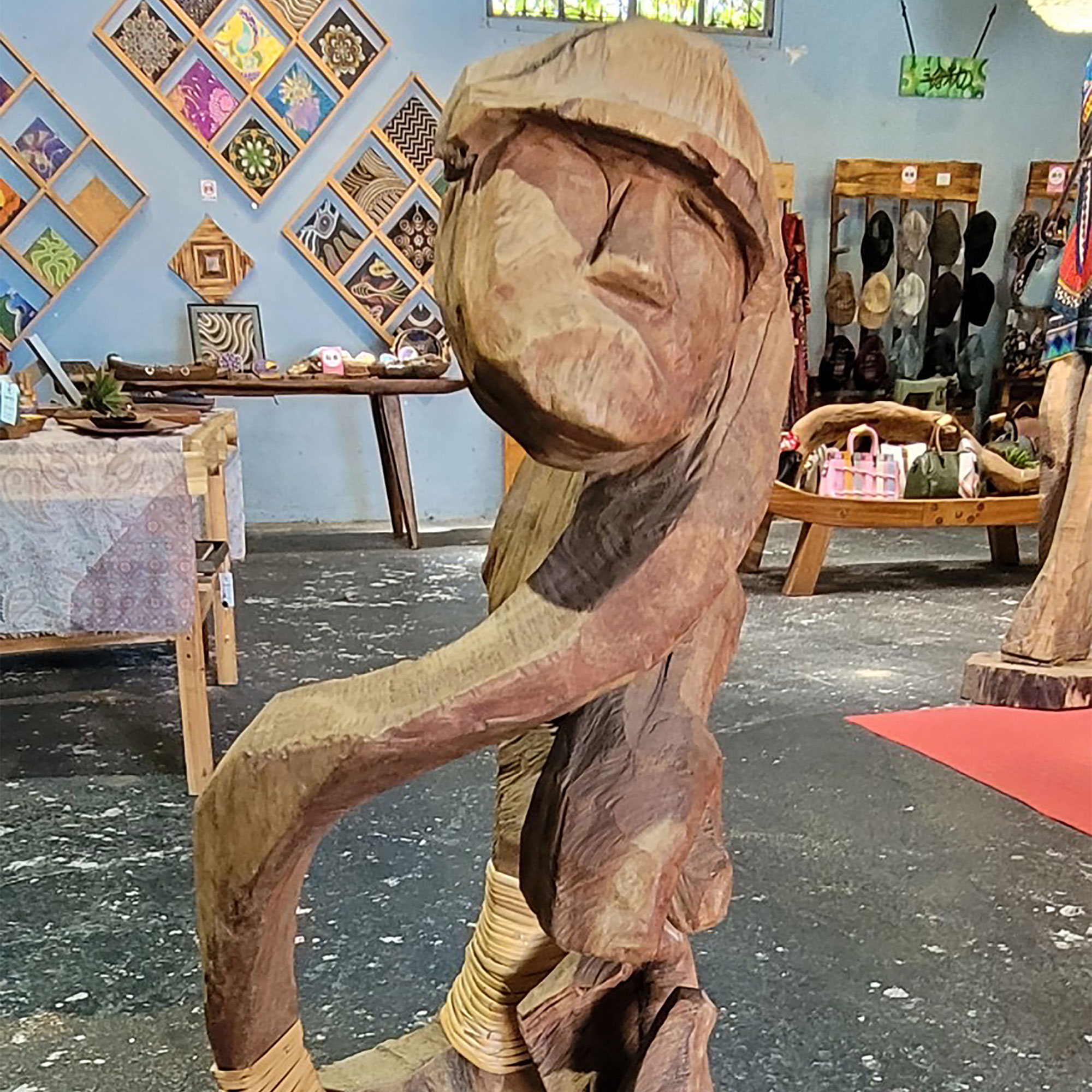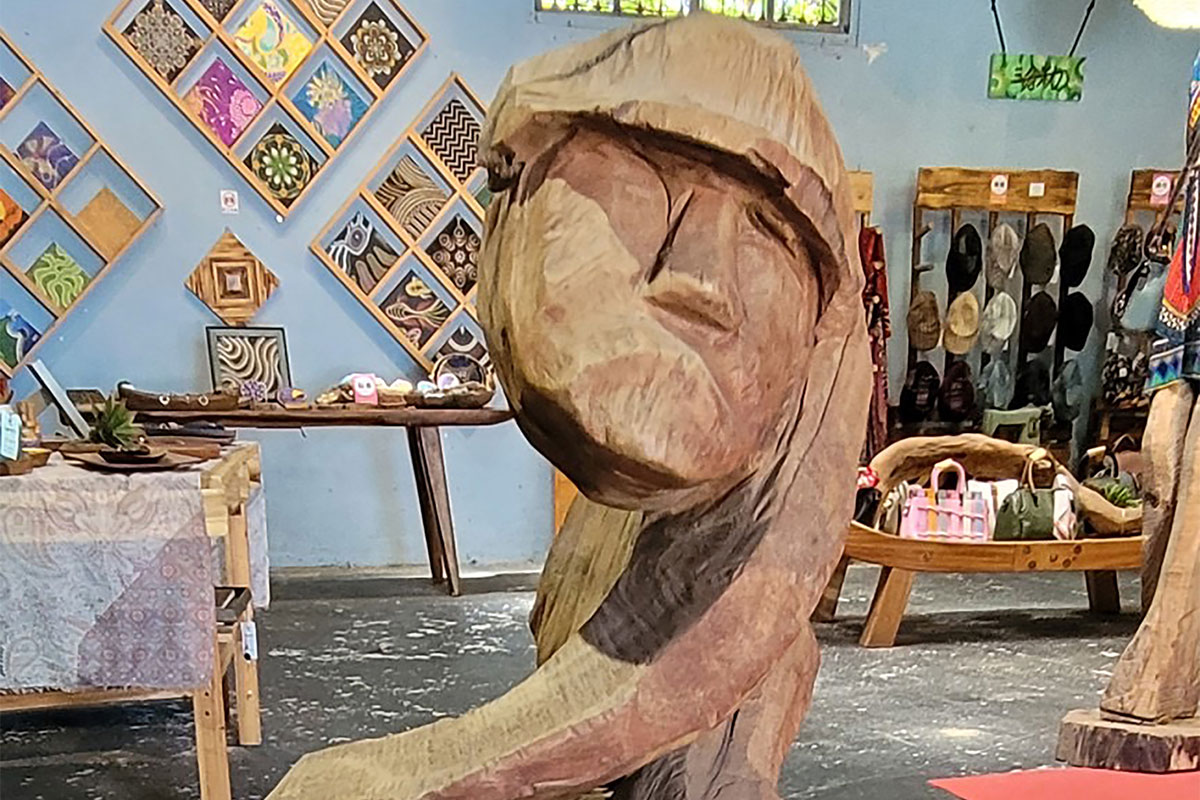Siki Sufin

Fishing Net Rope
- 2008, stout camphor wood, 107 × 27 × 40 cm.
- Courtesy of the artist.
Curatorial Perspective
Early modern colonialism imposed extraction of colonies, which included not just natural resources, ranging from deforestation, land deprivation, and mining, but also people inhabiting the colonies, particularly their life, will, and the knowledge of indigenous people. During World War II, the Japanese colonial government mobilized Taiwanese indigenous people, sending them to southern battlefields as the Takasago Giyutai Squad because of their knowledge of surviving and battling in tropical forests and their fighting will. After the war, Taiwan was taken over by the Chinese Nationalist Party, who later recruited army, including indigenous soldiers, to fight in the Chinese Civil War. Some of the indigenous fighters were even captivated by the Communist 8th Route Army, and were sent to fight the Korean War. Most of these indigenous soldiers died in the battlefields, and only a few returned to their homeland after drifting in foreign countries after the war. However, their deeds were mostly forgotten, and their stories excluded from the official national history. Like ruins created and cast behind after colonizers were done with extracting needed natural resources, they have lived a ghostly existence, seeking a chance of rebirth. Siki Sufin has spent a long time researching and studying these marginalized elders in indigenous villages. In addition to collaborating with documentary filmmakers to produce their stories, he also utilizes driftwood to create sculptures inspired by this theme. Featured in the exhibition is a new work comprising two sets of sculptures, namely, Mother Earth and Wings for Takasago Giyutai (Return). Their bases are covered in pieces of coral and rocks from the shores of eastern Taiwan. This work is created in the hope of comforting the young souls, who were lost due to the environment of the times or war. Installed in the expansive gallery space, they form a ritualistic site. In the Amis mythology, souls of those who die in foreign lands must pray to the ancestral spirit for wings to return to their native land. Yet, some of the Amis soldiers sent to the battlefields had never attended the rite of passage, in which their mothers would perform the coming-of-age ceremony for them. Therefore, the artist aims to perform this ritual with his sculptures, and “remotely offer the sacrifice” to those souls.
Creation Description
The new work Takasago Giyutai Squad was commissioned for the 2022 Taiwan Biennial and consists of three sets of carvings entitled Mother Earth and Takasago Giyutai. Their bases are covered in pieces of coral and rocks from the shores of eastern Taiwan. It is hoped that they can comfort the young souls lost due to the environment of the times or war. Indigenous soldiers from Taiwan were sent by the Japanese government to fight in the South Pacific during World War II and Taiwanese veterans saw combat during the civil war between the Chinese Nationalists (Kuomintang) and Chinese Communists. Although from different eras, they made similar sacrifices. In the tradition of Taiwan’s indigenous Amis tribe, during the coming-of-age ceremony, mothers “crown” their sons. Sacrifices are offered to heroic spirits unable to participate and that have gradually been forgotten, serving as a spiritual guide home.

